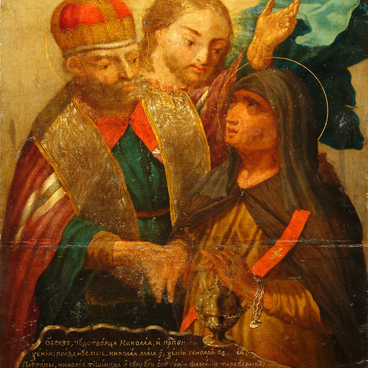The icon ‘Our Lady of Vladimir’ is attributed to the type of ‘Eleousa’ or ‘The Virgin Mary of Tenderness’. On such icons the Holy Virgin and the Holy Infant Jesus touch each other with their cheeks and Jesus Christ embraces his mother by the neck. The first Eleousa was painted by Apostle Luke in the first century AD. The authorship of ten icons is attributed to the Apostle; only their replicas have survived through the centuries.
In ancient Rus’ the image first appeared in the year 1130. The icon was brought from Byzantium by Metropolitan Mikhail as a gift to Prince Mstislav Vladimirovich. In contrast to other images of Eleousa, the Infant on this icon was painted with a doubled up left leg – his foot is visible from under the robes. The icon was dispatched to the Mother of God Nunnery in Vyshgorod; and in 30 years Prince Andrey Bogolyubsky moved it to the Assumption Cathedral in Vladimir. Since that time the icon has been named Our Lady of Vladimir.
In ancient Rus’ the image first appeared in the year 1130. The icon was brought from Byzantium by Metropolitan Mikhail as a gift to Prince Mstislav Vladimirovich. In contrast to other images of Eleousa, the Infant on this icon was painted with a doubled up left leg – his foot is visible from under the robes. The icon was dispatched to the Mother of God Nunnery in Vyshgorod; and in 30 years Prince Andrey Bogolyubsky moved it to the Assumption Cathedral in Vladimir. Since that time the icon has been named Our Lady of Vladimir.

